Last Chance to Catch NYC's Holiday Notalgia Train
We met the voices of the NYC subway on our nostalgia ride this weekend!


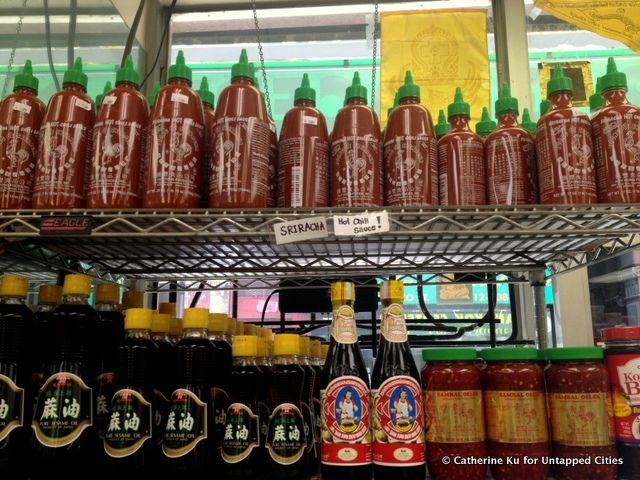
There’s probably a restaurant serving every cuisine in the world in New York City, but making authentic curry, dumplings, clotted cream or injera bread in your own kitchen gets tricky without the right ingredients. We go on a shopping spree for some of the more unconventional grocery list items at New York’s ethnic markets, starting with Asian groceries.
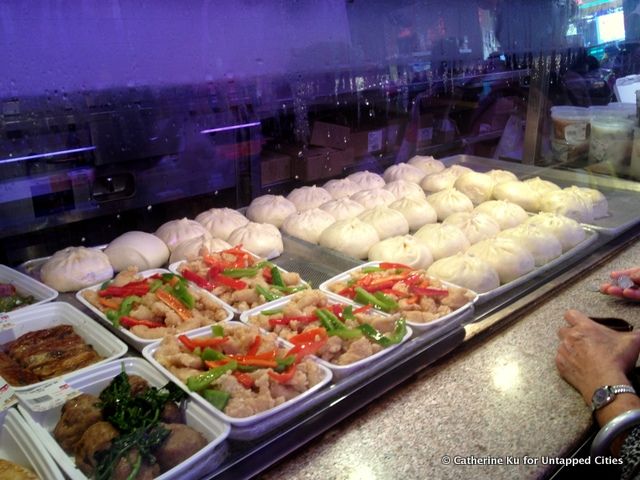
This is one market where the prepared foods take center stage and groceries are an afterthought. The narrow space is bookended by identical food counters, which offer roast meats, other hot dishes, sushi and baked goods. Don’t miss the enormous steamed buns for just $1 or 2 egg tarts for $1. There’s a small grocery area, but go for the prepared food.
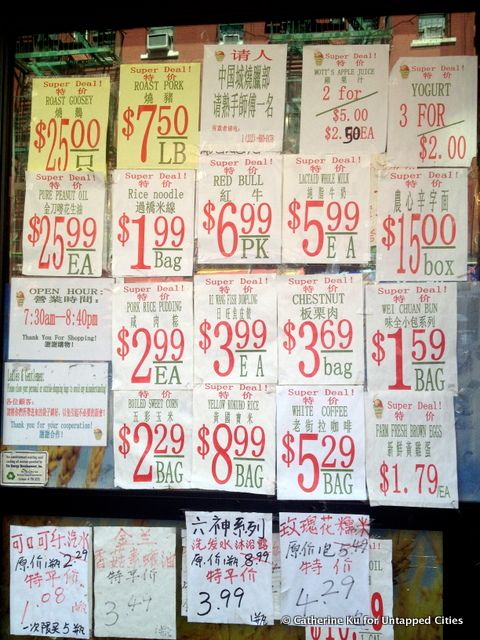
This huge market was crowded with shoppers even on a Monday morning. It has all the essentials for Chinese cooking, from fresh produce to canned goods, and is definitely a lot cleaner than the average Chinatown stand. There’s also live crab, fish and frogs (!) in the seafood section. The prepared foods area sells lunch boxes, freshly baked Chinese breads and cakes (most of them under $1) and drinks ranging from bubble tea to Red Bull.
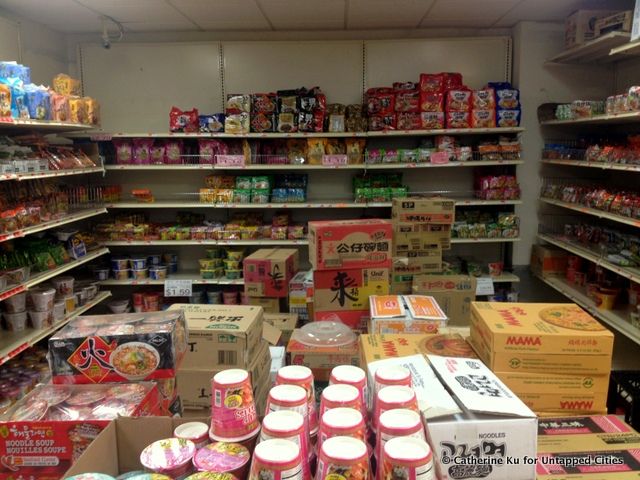
Another of Chinatown’s giant supermarkets, Hong Kong Supermarket offers two levels of Chinese favorites. There’s a discounted produce section in the back that offers still-fresh goods for a cheaper price. Downstairs is an entire section dedicated to ramen and Chinese snacks. It’s generally less crowded than New York Market, which makes shopping during peak times easier. Unfortunately there’s no bakery, but that’s hardly a problem when there’s one on every street corner outside.
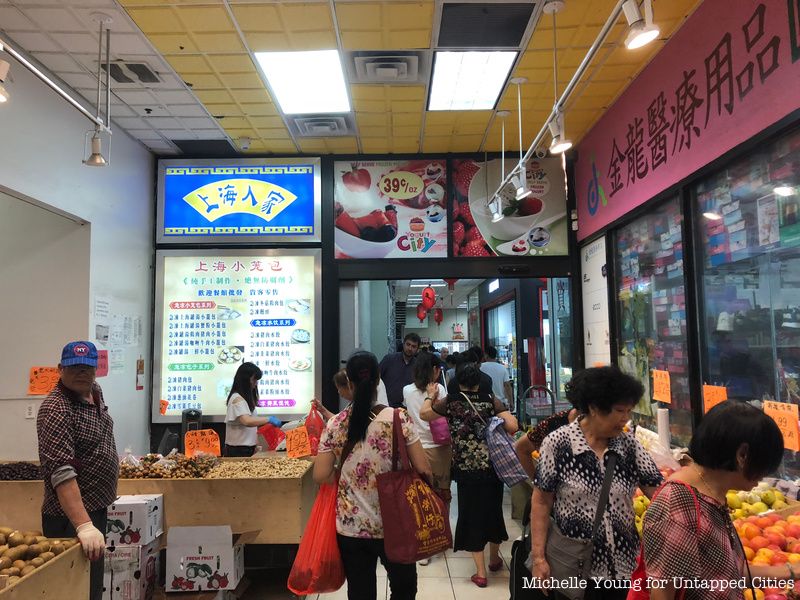
Fresh seafood and produce, cookware, packaged snacks and a food court–Fei Long has it all. The food court offers a variety of regional Chinese cuisines, from Cantonese to Sichuanese and Shanghainese. You’ll have to fight crowds on the weekends, but the massive store is clean and organized nonetheless.
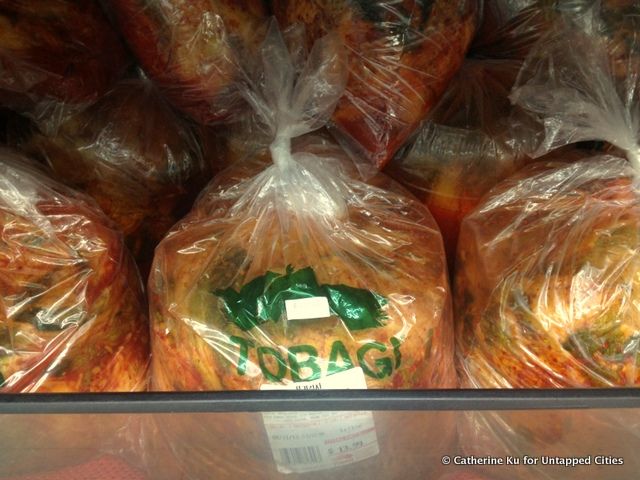
It’s not as big as some of the chain’s other stores in New Jersey, but H-Mart has all the Korean staples and an unbeatable location in the heart of Koreatown. Look for giant tubs of kimchi and frozen noodles. There’s a larger branch in Queens’ Woodside neighborhood.
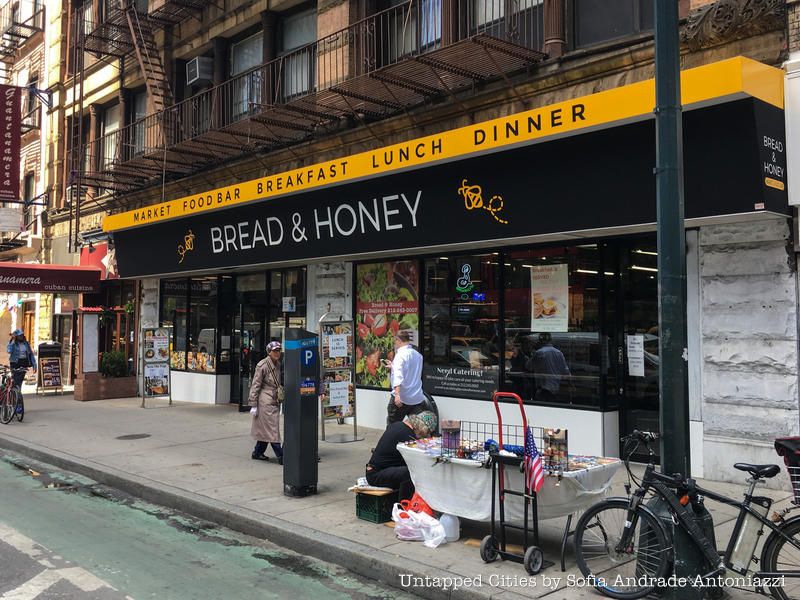
Korean groceries are a rarer find the further uptown you go, but this Hell’s Kitchen store (between 55th and 56th St.) is a quick fix for hungry lunchers and shoppers who can’t get to Koreatown. Its generic name and storefront belie the shelves of jarred, dried and frozen Asian goods inside, and the Mongolian barbecue and prepared foods (along with traditional deli offerings). Prices are higher than those downtown, but still better than Whole Foods or other area supermarkets.
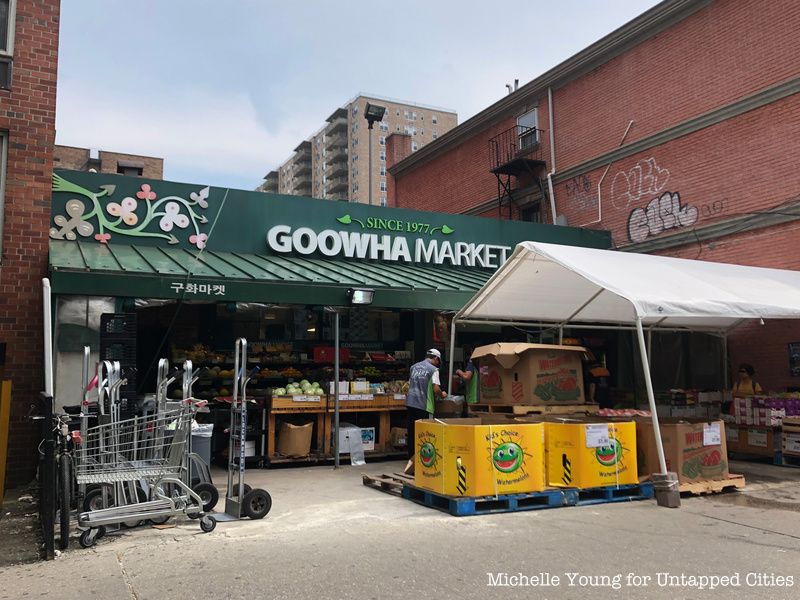
Flushing has a lot of larger Chinese supermarkets, but this small Korean store can just about compete with them. There are dozens of packaged banchan, just like you’d get at a Korean restaurant. For barbecue fans, there’s a wide selection of pre-marinated meats and marinades. For an authentic Korean drinking experience, try the makgeolli rice wine.
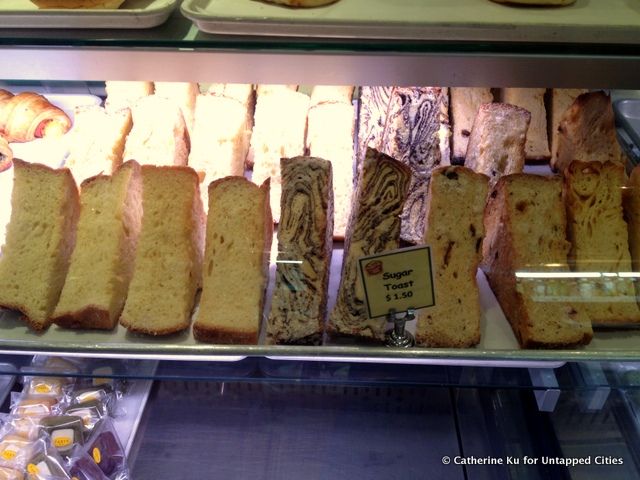
There are three branches of this Japanese grocery in Manhattan in the East Village, SoHo and Midtown East. That’s a good thing, because you can never have too much ramen or sushi. Space is small but crammed with Japanese goodies–green tea Kit Kats and Pocky, fresh shishito peppers and mochi. The prepared foods section serves huge bento boxes, burgers (with rice patties as the buns) and thick slabs of “sugar toast,” which is one of its most popular bakery items.
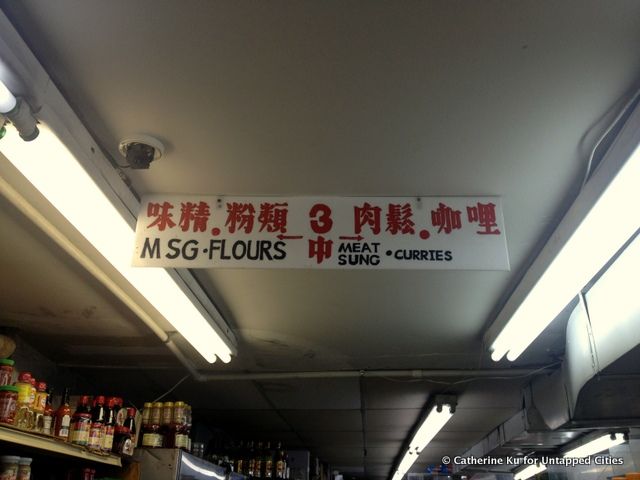
No need to go to a greasy Chinese food joint–you can get MSG at Tokyo Mart.
Ironically, the market plays Chinese songs as its soundtrack, but its offerings are as authentic as they come. There’s a whole aisle of soy sauce and a selection of sushi made while you watch.
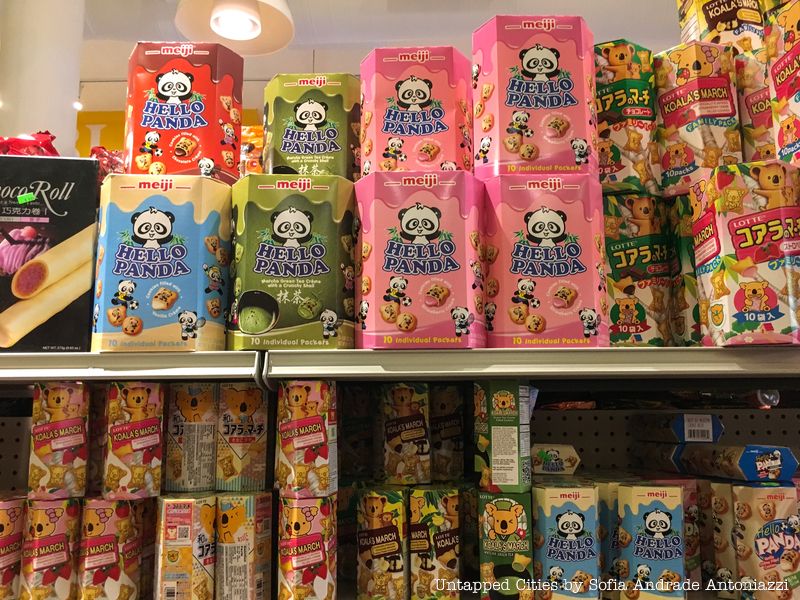
With locations in the East and West Villages, Morningside Heights and Flushing, M2M is a popular convenience store for quick grocery needs. Fresher produce and seafood can be found at larger grocery stores, but the snacks, bentos and dry foods are great. It’s a popular spot for NYU and Columbia students looking for their staple ramen.

This tiny Queens convenience store probably can’t cater to all your weekly grocery needs or your fix for more obscure ingredients, but it’s a convenient neighborhood spot in an area lacking in Asian markets. For those who don’t want to drive to Flushing, Family Market has most of the essentials for Japanese cooking.
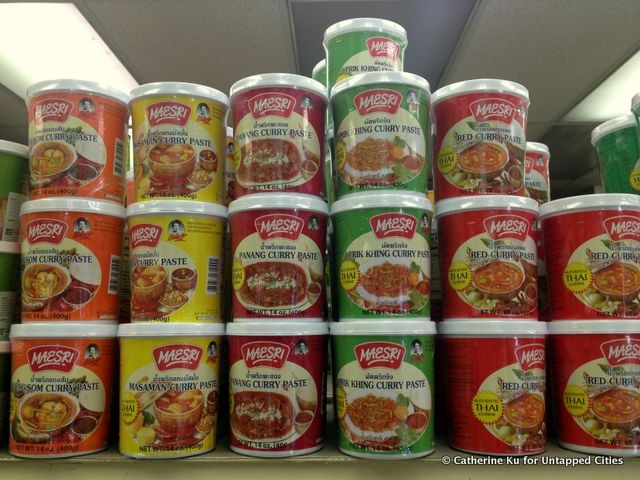
Bangkok Grocery stocks dozens of varieties of curry and fish pastes.
The owner of this tiny grocery on Mosco Street is from Thailand, and it shows in the store’s authentic offerings. There’s durian paste, mangosteen, coconut juice and shelves of different curry and fish pastes. Bonus points for the bunches of fresh Thai basil. For more mainstream cooks, there’s a shelf devoted to a familiar favorite, sriracha sauce.
Tan Tin Hung Supermarket at 121 Bowery (between Grand and Hester) is wonderful. They have an enormous variety of Vietnamese products. It’s almost covert — they sell vegetables out front and don’t have signs saying that’s it’s Vietnamese, it looks like any other store. Prices are excellent, for staples and specialties.
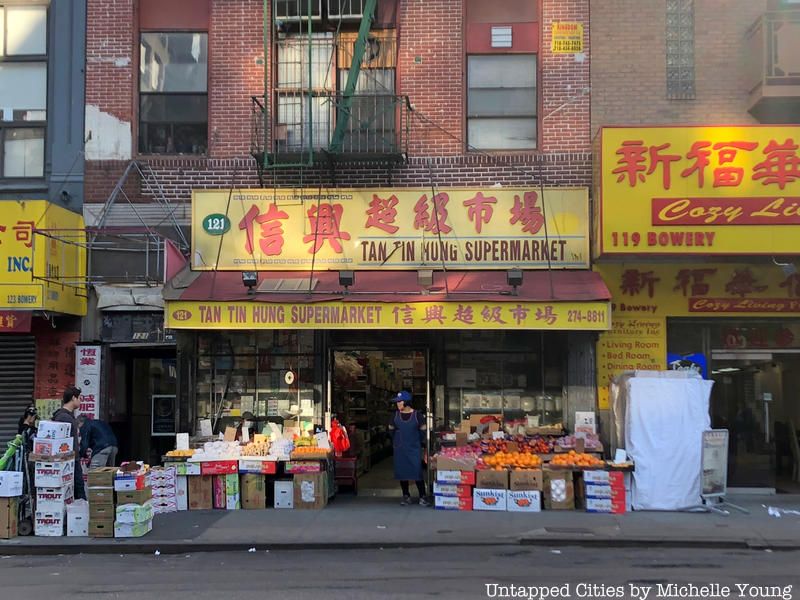
This Vietnamese supermarket is rather covert – selling vegetables out front without a sign spelling out that there’s a wide range of Vietnamese food inside. Prices are excellent for staples and specialties.
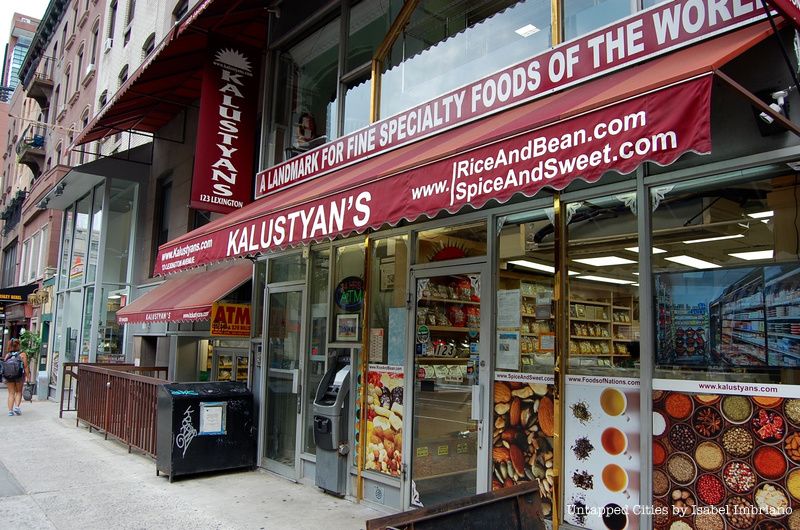
The best feature of this store is its spice collection that includes every spice you’ve ever heard of and many that you haven’t, from gluten to beet powder to ghost chilies. Of course there are the staples like rice, flour and sugar, but even those goods come in dozens of varieties: black japonica and idli rice, chestnut and millet flour, dozens of beans. Kalustyan’s also makes its own mango chutneys, yogurts and prepared foods, which are not to miss.
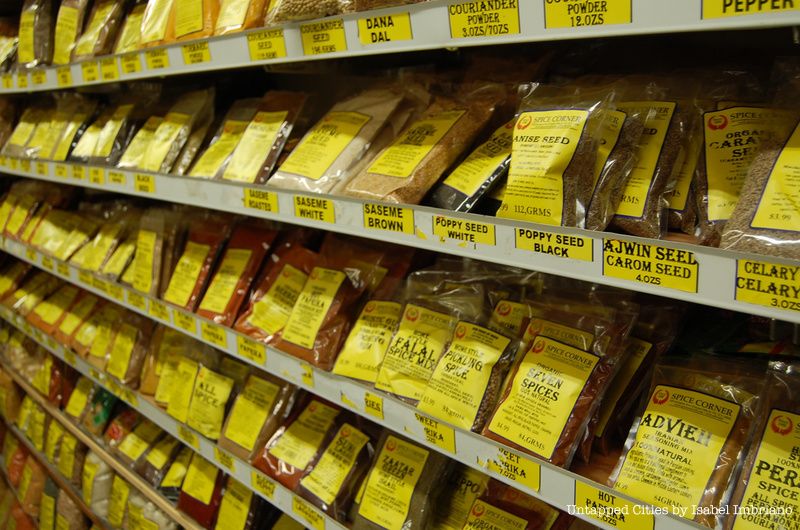
Just down the street, Spice Corner offers spices, herbs and fresh groceries –and samples! – at cheaper prices than Kalustyan’s, though with less variety. The best part is the dessert counter, which serves traditional Indian desserts like gulab jamun, fried dough soaked in sugar syrup.
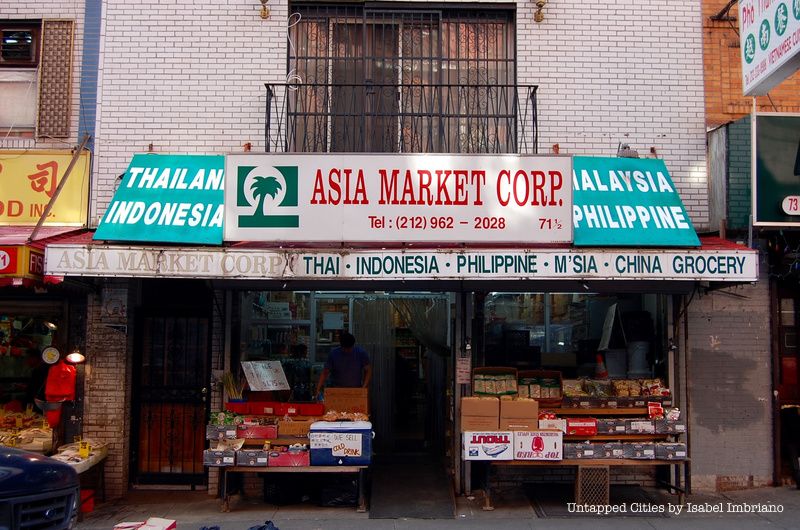
While Chinese, Japanese and Korean groceries are pretty easy to find in Chinatown, Southeast Asian goods are a little rarer. But there’s no need to hit up specialty stores when Asia Market offers products from more than half a dozen countries (including Thailand, Indonesia, the Philippines, Vietnam and Malaysia). There’s still the usual produce, ramen and spices, along with harder-to-find items like durian, Malaysian kaya spread and Indonesian shrimp paste.
Get in touch with the author @catku.
Subscribe to our newsletter